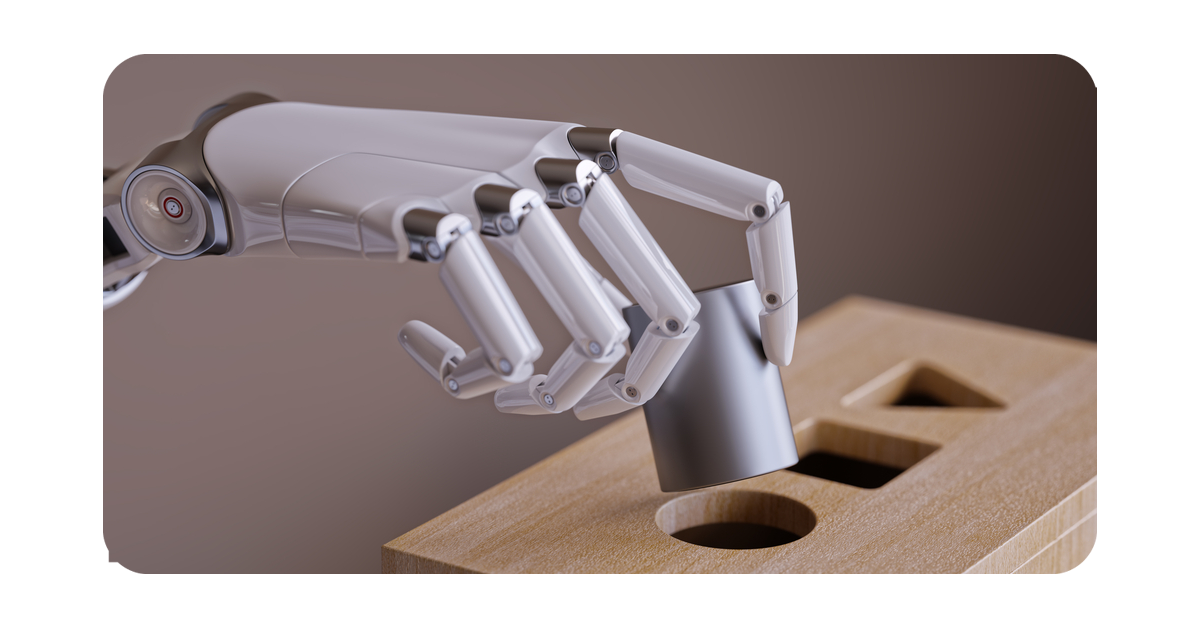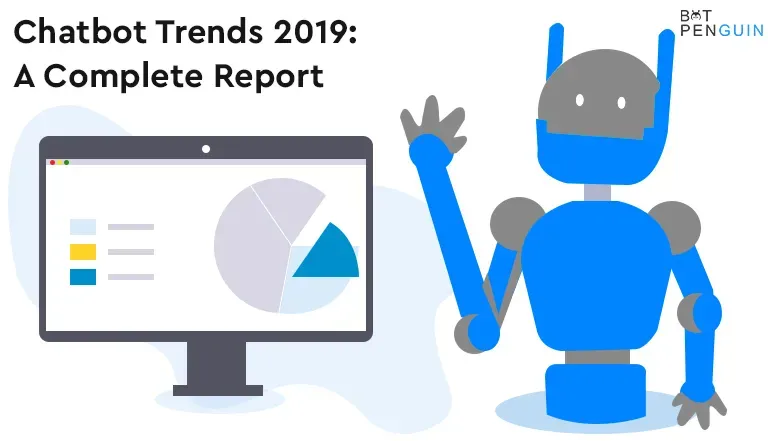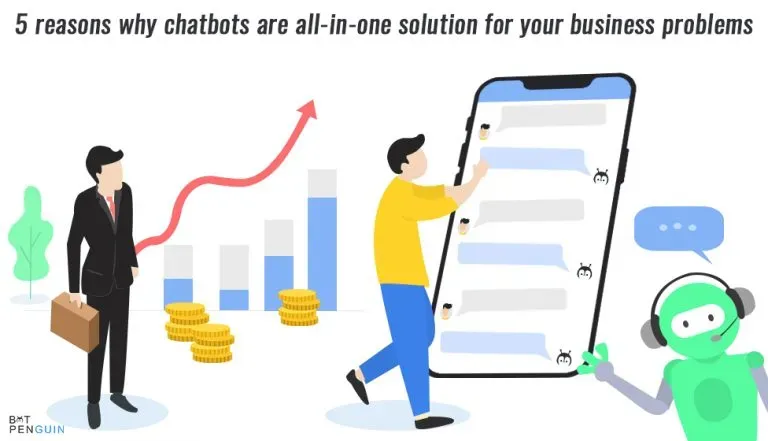Are you interested in developing a chatbot for your company? It is unsurprising. After all, chatbots are the latest version of AI. In Facebook Messenger, you'll see them quite frequently. As per the Facebook report, there are over 300,000 active chatbots on Facebook Messenger. It is a massive number for a technology that only gained traction a few years ago. Chatbots are appearing on a growing number of business websites, not just on Facebook Messenger. It is because the barriers that previously prevented people from using chatbots are being dismantled.
Customers are increasingly comfortable interacting with chatbots. According to a recent Drift survey, in 2019 only 38% of people said they prefer to talk to humans when interacting with a brand. It is down from 43% the year before. The remaining 62% of customers are pleased with chatbot assistance. But first, let's define what a machine-learning chatbot is and how you can use one for your business
What is Chatbot Machine Learning?
If you've heard of chatbots and how they work, you've probably also heard of machine learning. Machine learning, to be precise, is a critical component of a chatbot's ability to function 24 hours a day, seven days a week. It goes without saying that the future of chatbots depends upon machine learning.
But, more importantly, do you have any knowledge of chatbot machine learning?
Chatbot machine learning refers to a chatbot that is created using machine learning algorithms. Chatbots learn from the inputted data. Like a machine, learning codes fill the detail of data and human-to-human dialogues.
Thanks to machine learning, chatbots can train to develop consciousness, and you can also teach them to converse with people. The ability of chatbots to drive human-to-human conversations is one of the main reasons they have become so popular in the market. However, all of the tricks used to bring up a chatbot are dependent on the datasets and algorithms used. The more datasets you have, the more effective machine learning will be, and the more conversational chatbot you'll be able to create.
How to Build Chatbot Using Machine Learning?

When developing a chatbot, your sole goal should be to create a product that requires little or no human intervention. The steps below will help you in creating a deep learning chatbot.
1. Accumulating data
The preparation of data is the first step in any machine-learning process. Previous customer interactions can be used to train your chatbot in the same way. These data sets must be detailed and varied. They must include human interactions and all of the popular conversational topics. The central idea is that your chatbot machine learning requires data points. The process is known as data ontology creation, and the only goal is to collect as much data from interactions as possible.
Reshaping the data
Although it is not required, you may need to separate and reshape your data into single rows of insights and observations depending on your data source. Message-response pairs are added to a classifier in this way. The main point of this discussion is to establish a response to a conversation. Following that, all incoming dialogues will be used as textual indicators to predict the chatbot's answer to a question.
When creating this message-to-message board, you may want to impose some limitations, such as limiting the conversation to two people only, assigning individual messages sent to a collective unit, and requiring a response to a message within five minutes. Upon reforming the message onboard, the conversation will appear to be a genuine conversation like two humans, eliminating the chatbot's machine aspect.
When creating this message-to-message board, you may want to impose some limitations, such as limiting the conversation to two people only, assigning individual messages sent to a collective unit, and requiring a response to a message within five minutes. After the completion of the onboarding message, a genuine conversation appears between two humans. It eliminates the feeling of talking to a chatbot's machine.
2. Adding language to your chatbot
Pre-processing is the process of teaching your chatbot the nuances of the English language while keeping in mind the regional dialect and paying close attention to grammar, spelling, punctuation, and notations. As a result, the chatbot could respond to questions that were grammatically incorrect by interpreting the context.
Tokenizing, stemming, and lemmatizing of the chats are some of the sub-processes involved in this process. In layman's terms, this process entails using machine learning features to improve the readability quotient of chatbots. In this step, you'll use various tools to process the data you've gathered, create parse trees for the chats, and use Machine Learning to improve the technical language.
3. Select the type of chatbot:

After you've gathered, refined, and formatted your data, you'll need to think about what kind of chatbot you want to build. These chatbots are available in two types:
Generative chatbot:
This chatbot type, based on the Generative model, does not use a conversational repository. It is a more advanced type of chatbot that responds to user queries using Machine Learning. The majority of modern chatbots use the generative model. As a result, they can respond to almost any question. Furthermore, they include the human quotient in their discussions. As a result, a chatbot with deep learning is more adaptable to its customers' questions, but it should not be mistaken for imitating human conversation patterns. Initial chatbot developers will find that perfecting their art of chatbot development using this model is a time-consuming task that will require years of Machine Learning research.
Retrieval-based chatbot
To answer questions, this type of chatbot consults a predefined database. These can only answer a limited number of questions and can answer the same question twice. However, for the chatbot to comply, you must choose a response system. As it consults a database for user questions and responds accordingly, a retrieval-model-based chatbot rarely makes mistakes. However, it has limitations in that it cannot answer tough questions and may not appear human-like. Because retrieval chatbots are easy to code and create, most websites use them to simulate live agent interactions. Although such a chatbot keeps track of a user's previous messages, it can only respond to straightforward questions.
4. Develop word vectors
Popular acronyms such as LOL, LMAO, TTYL, and others are used as word vectors. These aren't included in any conversation datasets, but they're widely used on social media and other private conversations. You can either make your list of word vectors or use online tools to do it for you. These word vectors were created using deep learning python as the programming language.
5. Creating a Seq2Seq Model
This step requires someone familiar with Python and TensorFlow. You'll need to write a Python script for your machine-learning chatbot to create a seq2seq model. You can use the TensorFlow function once you've learned how to do so.
6. Track the Development of your Chatbot

Track your chatbot's training process after creating a Seq2Seq model. You can examine your chatbot at various points along the input string, test their outputs in response to specific questions about your company, and improve the chatbot's structure in the process. With practice, a chatbot with deep learning will finish sentences while adhering to the rules of spelling, grammar, and punctuation.
7. Launch the Chatbot
You must launch the chatbot at a location where it can interact with people after feeding it data and testing it using the Seq2Seq model. You now have two options: either launch on the app or the website. You can soft launch it to a select group of people who interact with the chatbot and test its answering and response capabilities. Create a folder, install Node, and start working on your new Node project. Install the other Node dependencies if necessary.
8. Test your Machine-Learning chatbot
The final step is testing your chatbot machine learning and evaluating its market success, probably one of the tensest and most stressful situations for a developer. You must determine its conversational model and test the chatbot against the following objectives:
- Testing the Seq2Seq evaluation sequence score for BLEU
- The accuracy and precision of the chatbot model
- The value of a generative model-based chatbot
You can compare the chatbot's responses to the target above metrics with human judgments of the appropriateness of the response provided in a given context. Wrong answers or unrelated responses result in a low score, prompting new databases to the system.
How to improve the Chatbot's Database consistently?
After interacting with your chatbot machine learning, you will gain tremendous insights in terms of improvement, resulting in compelling conversations. One way to improve your conversational skills and provide various answers in response to queries based on scenarios is to add more datasets to your chatbot.

A chatbot should be able to tell the difference between multiple conversations with the same person. For the best, take care of the encoder and decoder messages and their correlation to accomplish this. Hyperparameters such as LSTM layers, LSTM units, training iterations, optimizer selection, and so on can be added to it.
Conclusion
Many organizations are undergoing significant structural changes as a result of chatbots. A chatbot powered by artificial intelligence can help with sales and customer service. Machine learning and Artificial intelligence are rapidly evolving, and chatbots will follow suit in the coming years. You'll be able to resolve customer queries faster and more effectively with machine-learning chatbots.
BotPenguin is an AI-based chatbot creation platform. When you create a chatbot using BotPenguin, you give your company the ability to provide excellent customer service. With the availability 24 hours a day, seven days a week, without hiring additional employees.



